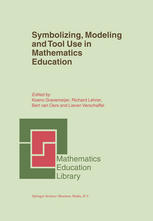

Most ebook files are in PDF format, so you can easily read them using various software such as Foxit Reader or directly on the Google Chrome browser.
Some ebook files are released by publishers in other formats such as .awz, .mobi, .epub, .fb2, etc. You may need to install specific software to read these formats on mobile/PC, such as Calibre.
Please read the tutorial at this link: https://ebookbell.com/faq
We offer FREE conversion to the popular formats you request; however, this may take some time. Therefore, right after payment, please email us, and we will try to provide the service as quickly as possible.
For some exceptional file formats or broken links (if any), please refrain from opening any disputes. Instead, email us first, and we will try to assist within a maximum of 6 hours.
EbookBell Team

0.0
0 reviewsThe almost universal rejection of the notion of symbols as `carriers of meaning' has created the need to find an alternative for the use of models as embodiments of mathematical concepts. By taking its point of departure as a concern for the way students actually use tools and symbols, and for what these signify for them, this book explores the option of building on symbolizing, modelling and tool use as personally meaningful activities of students. This theme is approached from different angles and different perspectives. One dimension is that of setting, varying from the study of informal, spontaneous activity of students, to an explicit focus on instructional design, and goals and effects of instruction. Another dimension is the theoretical framework of the researcher, varying from constructivism, to activity theory, cognitive-psychology and instructional-design theory. This book will appeal to a wide audience, varying from researchers, instructional designers, educators, and graduate students.